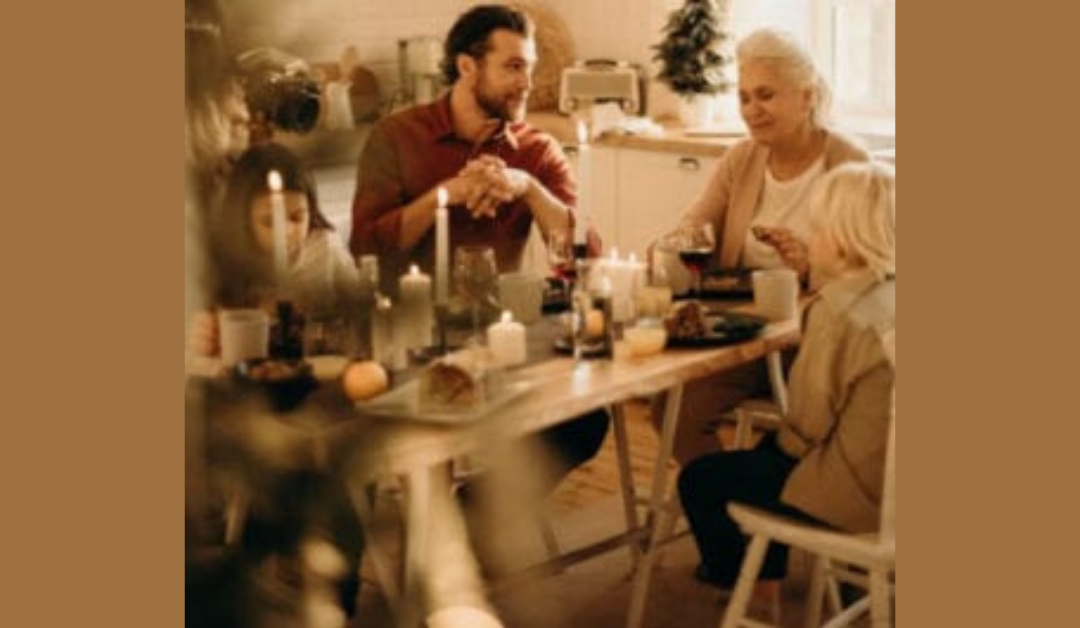
by Bag It Team | Aug 18, 2020 | Educational Articles
 Let’s say the unthinkable happens.
Let’s say the unthinkable happens.
You suddenly become hospitalized due to Covid-19 and are unable to communicate, make decisions for yourself or have a loved one by your side.
Preparation of your advance directives for health care is the best way to give voice to your wishes and what matters most to you. A healthcare power of attorney informs your doctors about your preferences for medical care and could give helpful insights to those you select to speak on your behalf. It’s impossible to account for all the possible scenarios and every potential long-term impact on your health from Covid-19. But even expressing what makes life worth living for you or the quality of life you don’t want to suffer later can guide the decisions made about treatments to provide and when.
If you’ve already put the appropriate documents in place and shared them with the right people, good job – but keep reading if you did that pre-Covid! Now is a good time to pull them out and reread them to make sure you are comfortable with your instructions in light of the pandemic. Do they reflect your treatment preferences no matter the reason for your condition or critical illness, or do you have definite ideas about treatments you do and do not want in the case of Covid? Are any changes needed to the named agents appointed to act on your behalf? Do you need to add back-up trusted agents in the event your appointed spouse/partner or other household members also fall ill?
Whether you need to complete these documents for the first time or an update is due, make this a priority today! Below is more information about where to find resources for your state as well as tools and resources to complete the process.
The Conversation Project
Downloadable life care planning packet for Arizona
Downloadable life care planning packet for Arizona: (Spanish)
AZ End of Life Partnership
Downloadable advance directives for 50 states:
aarp.org/caregiving/financial-legal/free-printable-advance-directives
Caring Info
POLST (portable medical order for emergency medical care)
Once the paperwork is in order, provide copies to the involved people in your life and also have a frank conversation with them about what’s important to you. While it may not be easy to talk about it, having the documents ready and sharing your personal values with them means everyone will feel more prepared and brings a bit of control and peace of mind – just in case the unexpected happens.

by Annettra Farrington | Jul 9, 2020 | Educational Articles
 Raise your hand if you postponed or converted to telemedicine visits for “nonessential,” routine and/or preventive healthcare early in the Covid 19 pandemic. If yes, many of us did the same thing.
Raise your hand if you postponed or converted to telemedicine visits for “nonessential,” routine and/or preventive healthcare early in the Covid 19 pandemic. If yes, many of us did the same thing.
As stay-at-home restrictions lifted, many providers started seeing more patients in person while still offering a virtual option. But there can be confusion around which appointments we should now schedule to see the doctor in person.
Simple blood tests, urine tests and direct exams can detect early cancers, diabetes, hypertension and many other illnesses. Some critical aspects of care, like a physical exam, can only be performed in the office. Another question is whether it is safe to schedule overdue or upcoming screening tests and other procedures – especially as the pandemic continues to rise in many communities.
These are shared decisions between you and your healthcare provider. Keep in mind that your provider wants you to be in touch and wants you to get the medical care that you need. Call your doctor’s office to discuss your particular healthcare situation. Speak candidly about any concerns and questions you have, as well as making clear your needs and preferences. Together you can assess what’s best for you and make a game plan for your care.
If you’ll be scheduling an appointment for an in-person visit you will probably be asked if you are experiencing any Covid-related symptoms and if anyone in your home has tested positive for Covid-19.
 Healthcare providers receive guidelines from state, local, county health departments and the CDC about how to safely operate their facility while minimizing risk to patients and their staffs. Many providers have implemented scheduling, staffing and technology tools to complement the physical distancing procedures and environmental changes they have made. If you are not automatically provided with the pertinent detail when you schedule your appointment, click here for some questions to ask the scheduler about the practices in place. You can also check out the provider’s website for information posted there about steps they are taking.
Healthcare providers receive guidelines from state, local, county health departments and the CDC about how to safely operate their facility while minimizing risk to patients and their staffs. Many providers have implemented scheduling, staffing and technology tools to complement the physical distancing procedures and environmental changes they have made. If you are not automatically provided with the pertinent detail when you schedule your appointment, click here for some questions to ask the scheduler about the practices in place. You can also check out the provider’s website for information posted there about steps they are taking.
For more tips on how to safely navigate an in-person medical appointment, read below
- If you are experiencing Covid-related symptoms the day of your in-person appointment, call the provider’s office for guidance before you go in.
- When you arrive to the facility, you will likely find new procedures and safety precautions put in place since your last visit. Follow the requested instructions and communicate with the staff if you observe something or are asked to do something that makes you feel uncomfortable.
- Wear a mask or face covering throughout your visit unless you need to remove it for a procedure or are requested to do so by your provider.
- Wash your hands with soap and water for at least 20 seconds or use hand sanitizer with 60% alcohol before and after touching any surfaces in waiting areas, exam rooms, and other common areas. Avoid touching surfaces as much as possible.
- Avoid touching your face, including your eyes, nose and mouth.
- Cover your cough or sneeze with a tissue or your elbow, and throw away the tissue. When wearing a mask, cough or sneeze into the mask.
- Follow social distancing recommendations as much as possible.

by Annettra Farrington | Mar 17, 2020 | Educational Articles

Here are the details to collect, how to start the conversation and free online tools to help you build a solid family health history.
Information to collect:
- Write down the names of relatives on both sides of the family (ideally three generations): parents, children, grandchildren, siblings, grandparents, aunts/uncles, nieces/nephews, cousins. (Accessing a family tree may be helpful)
- Add for each person any information you have about their:
- sex at birth
- date of birth
- ethnicity
- known medical and mental health conditions and age of diagnosis
- any other details about lifestyle, habits, environmental factors, results of any genetic testing.
(If a family member is deceased, note age at time of death, any known medical/mental health conditions, and cause of death)
Start the conversation!
- Identify the family members on each side (mother’s and father’s side) who might be most knowledgeable about your family members.
- Let them know the reason you would like to ask them some questions and the kinds of information you are seeking. Give them some time to think about it or to collect info if needed.
- Share any information you have gathered so far and then ask them to add more details where possible.
- Some family members may be uncomfortable discussing these matters. Respect the privacy of your relatives as confidential information is shared. Let them know that having this information gathered will benefit ALL family members.
- The information can be gathered in person, by phone, or in writing – whatever is most comfortable and most convenient. In cases where information is incomplete, just include what is accurately known. Do not guess.
- Sometimes medical records and family documents like scrapbooks can fill in some blanks, as can public records.
What to do with the information you’ve collected:
- Create a written document (or see below for online options) with the collected family history information gathered.
- Share copies with other family members for them to share with their own doctors to inform them of their family health history.
- Give a copy of the Family Health History to your doctor for their records and review it with them. The document can help your doctor look for early warning signs of disease and recommend steps for reducing your personal risk of disease.
- Questions to ask your doctor about review of your Family Health History:
- Does my family history put me at risk for certain conditions or diseases? Other members of my family?
- Are there any screening tests I should have now or in the future?
- Should I have genetic counseling or genetic testing?
- What lifestyle recommendations do you have to reduce my risk?
- What information should I share with other family members?
- Be sure to update the records over time and provided updated copies to family members. This can be a valuable document for future generations as well.
Free online tools to help collect your family health history and share it with relatives and doctors.

by Annettra Farrington | Mar 12, 2020 | Podcasts
Our Executive Director, Mindy Griffith, recently had the opportunity to talk with Mama Bear Donita and share the Bag It story and the importance of self-advocacy and keeping track of your information.
Listen Here:

by Annettra Farrington | Jan 14, 2020 | Educational Articles
- Have a conversation with your health care team about your treatment plan and the expected cost. Talk to your doctor about how cancer treatment could affect your ability to work.
- Understand your health insurance coverage. It is vital that you pay your health insurance premiums on time and in full. If you don’t have health insurance, immediately find out if you can obtain a policy or if you qualify for Medicaid.
- Meet early with your oncology social worker, navigator or advocate, and be candid about any financial difficulties and other needs you have. They are there to help you manage your cancer care costs.
- Be informed about your legal rights and all benefits available to you through your employer: disability insurance, accommodations in your job duties, hours/leave time. Your spouse should do the same with their employer.
- Prepare a budget. Organize and keep track of your bills. Verify insurance benefits are correctly applied. (Ask a trusted family member or friend to help you with this.) Appeal insurance claim denials. (Ask a member of your health care team to help with this.)
- If you are experiencing financial hardship, explain your situation to creditors and medical providers and ask for their help. You may be able to negotiate a discount or more time to pay your bills.
- Tap into the expertise of nonprofits in the cancer community. They can help you navigate resources and find assistance with costs related to treatment, co-payments, prescription drugs, basic needs, transportation, childcare as well as insurance matters and other support services. They can often help you apply. Several organization offer free services from their navigators and social workers: CancerCare, Livestrong, PAN, CSC, CancerCare pub
- Look into federal and other programs in your state that can help cover expenses and replace income if you can’t work during and after treatment. Apply quickly if you are eligible for benefits.
- Consider other of income: retirement accounts, available credit, personal loan, cashing in life insurance policy, sale of real estate or personal property.
- The financial burden of cancer can impact your physical and mental well-being. Asking for help can be hard but allowing others to lend a hand alleviates stress for you and your loved ones and lets your focus on your recovery.

 Let’s say the unthinkable happens.
Let’s say the unthinkable happens.

 Raise your hand if you postponed or converted to telemedicine visits for “nonessential,” routine and/or preventive healthcare early in the Covid 19 pandemic. If yes, many of us did the same thing.
Raise your hand if you postponed or converted to telemedicine visits for “nonessential,” routine and/or preventive healthcare early in the Covid 19 pandemic. If yes, many of us did the same thing.




Recent Comments